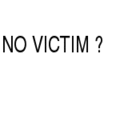Wonder Drug Cover-Up
Wonder Drug Cover-Up
Dennis Myers, Reno News & Review, October 31, 2002
We've heard it repeatedly. It's the mantra of prosecutors, police
officers and federal drug officials: There's no scientific evidence that
marijuana is medicine.
In D. Brian Burghart's News & Review article on ballot Question 9,
Burghart reported that number one on law enforcement's list of reasons for
opposing marijuana use was, "No one, not the American Medical Association or
the courts, has scientifically proven pot has medicinal benefits."
The distinguished physician Dr. Richard Gammick, Washoe County's district
attorney, once said, "They would have to prove this is a medically necessary drug... "
Well, no, they wouldn't. They already have. Not once, not twice, not a hundred
times, but thousands of times. That's how many studies of medical marijuana are
available. Marijuana is not a new medicine--"marijuana was being used
therapeutically by mankind 2,000 years before the birth of Christ," Drug
Enforcement Administration judge Francis Young ruled in 1988--so it's been
studied for almost that long. Migraine, cholera, tetanus, grand mal seizures, muscle
spasm, even rabies--if there's a malady, there's probably a scientific study of
marijuana's use in treating it.
That's why migraine specialist Ethan Russo says, "Cannabis is the most useful
plant on earth." And the no-scientific-evidence canard has been discredited so
often we must assume those who still use it now know it's false.
Don't believe me. Here's a handy-dandy guide for checking it yourself. There's a
medical library at the University of Nevada, Reno. Drive north on Virginia Street.
Two streets past the planetarium turn right on 17th Street. Drive past KNPB and
stop at the Pennington Building. Walk inside to the medical library. Ask to see the
Journal of the American Medical Association for Oct. 20, 1975.
On page 306, you'll find a study of the value of marijuana in controlling epileptic
convulsions. If you don't trust just one source, look at the end of the article and
you'll find 11 footnotes listing other studies of the plant's use in maladies from
cholera to epilepsy. You can find many of the footnoted studies in the medical
library and each study will have still more footnotes to still more studies.
After you've read the JAMA article, you might then ask for the Journal of
Neurology, Volume 236. On page 120, you'll find a 1989 study, "Effect of
Cannabinoids on Spasticity and Ataxia in Multiple Sclerosis." It footnotes 21
additional studies.
Then ask for two issues of the New England Journal of Medicine--Sept. 7, 1995,
and Jan. 17, 1980. On page 135 of the 1980 issue, you'll find "Antiemetics in
patients receiving chemotherapy for cancer."
It has 12 footnotes to other studies. On pages 670 and 671 of the 1995 issue, you'll
find two letters from physicians describing the benefits of marijuana as an appetite
remedy for wasting disease and describing the opposition of law enforcement even
to the study of medical marijuana.
Then, the next time you hear Dr. Gammick or one of his colleagues say there is no
scientific proof of the medical benefits of marijuana, give them a call and ask them
why they're saying it.
Source: Reno News & Review (NV)
Author: Dennis Myers
Published: October 31, 2002
Copyright: 2002 Chico Community Publishing, Inc.
Contact: renoletters@newsreview.com
Website: http://www.newsreview.com/issues/reno/
| 





